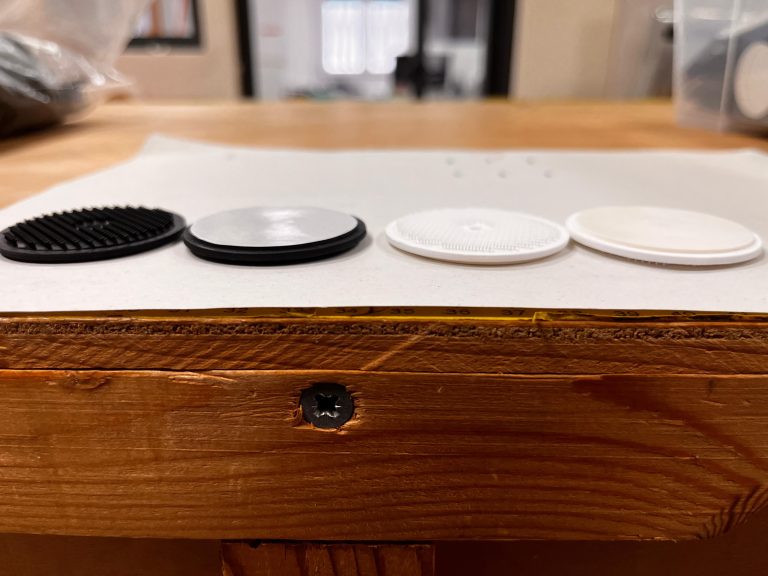 Composite technology has had and continues to have one of its strongest points in the simplicity of materials assembly, a characteristic well-suited to the production of one-off models or mass production that has favoured its widespread adoption.
Composite technology has had and continues to have one of its strongest points in the simplicity of materials assembly, a characteristic well-suited to the production of one-off models or mass production that has favoured its widespread adoption.
Francesco Fiorentino
Simply by looking at a boat made in composites, even those who are not experts but have some knowledge of the various types of reinforcing fibres can easily see if the composite is made of glass, aramid or carbon fibre. But what is difficult to see and be sure about is the kind of resin used. In most cases we always speak of “fibreglass” and often this means a composite material made of fibreglass and polyester resin. The polyester family is the “poorest” of the resins for making composites. This kind of resin is the most economical, the commonest and the simplest to use even for those without specific knowledge of composite technology, all excellent reasons that over time have made it popular and currently affordable for anybody who wants to build or repair any product in composite. Although polyester resins are relatively easy to handle, like all resins they are based on a chemistry that is often unknown to most of its users. Knowledge of the basic chemistry of any material and in particular of resins is the secret of an excellent result, and if ignored can create a lot of damage. This rule is valid also for polyester resins, but unlike the more “noble” resins such as vinylester and epoxy, it “forgives” errors due to inexperience or incorrect working.
Types and characteristics
Polyester resins are unsaturated heat-setting polymers that pass from the liquid to the solid-state when mixed with a catalyst. Polyester is obtained from the chemical reaction of a dibasic acid with glycol ester and a reticulating monomer, styrene, present in the resins in quantities of up to 50%; its fumes are responsible for the classic sharp and pungent odour during production. There are two large families of polyester resins used in the composites industry and in particular for boatbuilding, orthophthalic polyesters and isophthalic polyesters. Orthophthalic polyester resins are the commonest and most economical, and those best-known to boatbuilders, for their thixotropic characteristics that makes it very easy to impregnate fabric and work on the finished product. They have modest mechanical characteristics and, once hardened, are very fragile under impulsive shock, very sensitive to water and have little thermal stability which makes them very susceptible to high temperatures. Given their rapid spread at all levels of composite production, and with the need to obtain better mechanical properties from this kind of resin, over the years the chemical industry has developed a type of polyester called isophthalic (photo one) which, while costing between 10 and 15% more than orthophthalic resins, have decidedly superior mechanical properties and better resistance to water and chemical agents. Despite their relatively higher cost, isophthalic resins are increasingly more common than orthophthalic resins precisely because of their greater resistance to water and chemical agents. The problem of the presence of water, even in the form of air humidity, in products in fibreglass is a very delicate problem for boatbuilders because it can produce the well-known phenomenon of osmosis. Guaranteeing better quality for products means, for builders even with small-scale production, choosing a better quality of resin which can certainly ensure they have fewer after sales problems with osmosis. Both orthophthalic and isophthalic resins are very rigid and for this reason fragile, with shrinkage factors after hardening that are rather high and tend to create “print-through” phenomena (photo two) in products, fabric marking that makes it necessary to restore the surface finish of the product. There is a large variety of polyester-based resins with degrees of thixotropy suitable for various kinds of fabric, mats, woven cloth and multiaxial, and for all kinds of structural or aesthetic components produced with hand lamination or infusion. In polyester resins the reactive groups are distributed not only along the full length of the train but also inside it. This large quantity of reacting groups is responsible for the great stiffness and hence fragility of this kind of resin for this reason polyester resins produce excellent results when coupled with glass fibres or mixed glass/aramid fibres, producing composites that combined the stretching characteristics of glassfibre with the intrinsic stiffness of the resin. On the other hand polyester resins are not recommended for structural use with carbon fibre, because both have great stiffness and fragility. However, the large number of reacting groups brings a big advantage, in that it makes polyester resins “wild cards” because they tend to create chemical bonds with numerous plastic materials, so are excellent for rapid or emergency repairs on various kinds of plastic components.
The chemistry
The polymerising mechanism of polyester resins is a chain reaction set off by a catalyst which, when mixed in a given proportion with the “virgin” resin, stimulates the creation of chemical bonds between the reacting groups of the polymer chains. This reaction, called catalysis, creates a process of reticulation of the resin which in practice hardens it. In addition to a catalyst, to control the speed of polymerising Asian a chemical accelerator can be added, and this is often necessary when working with low temperatures or very tight production times.
Coupled with the catalysis is an isothermal reaction, an increase in the temperature of the resin due to the chemical reactions which form reticulation of the polymer chains. This phenomenon is very obvious above all in the initial phases of catalysis and can take the temperature of products as high as 80°C and consequently further accelerate the chemical reactions. For this reason in producing any element in composites it is a good rule to respect three fundamental parameters: the proportion between resin and catalyst; the quantity of accelerator and above all the pauses between the laying of the various layers of laminate. Polymerisation is an irreversible process, once catalysed the resin cannot be returned to its liquid state. As already described, the speed of catalysis is directly proportional to the amount of catalyst: the more catalyst is mixed with the resin the faster catalysis, and so the gelling of the resin, occurs, but this does not necessarily mean the open polymer chains have all been able to create bonds. Often excessively rapid catalysis can leave chains open, as can the use of insufficient catalyst; in both cases the result is always the same: a relative reduction of the mechanical properties of the resin and so the product, and a greater risk of water infiltration. On the other hand using two little catalyst inevitably does not favour polymerisation of the resin, which does not harden and makes the product unusable and hard to recuperate. As in all composite material processes, thehygrothermal characteristics of production departments are fundamental for guaranteeing the best possible quality of the composite, so it is always advisable to laminate at temperatures around 20°C with humidity that is not too high to avoid anomalies in the speed of catalysing and the absorption of water in the laminate. Since chemical reactions are involved one should always use adequate protection against contact with resins and/or solvents, using overalls and gloves during operation and in particular always protecting airways with masks incorporating suitable filters. The styrene contained in the resin to dilute it produces toxic fumes that damage the lungs (photo three).
Post curing
To optimise the mechanical properties of polyester resins, as with other kinds of resin, post-Cura treatment can be used with baking in ovens to ensure the creation of as many bonds as possible (photo four). This is not widely done in the boatbuilding field for two main reasons: first the increase in production costs and time would make it less attractive both for the builder and the end customer, and secondly because most boatbuilders, especially in small yards, are not equipped for this kind of operation.







